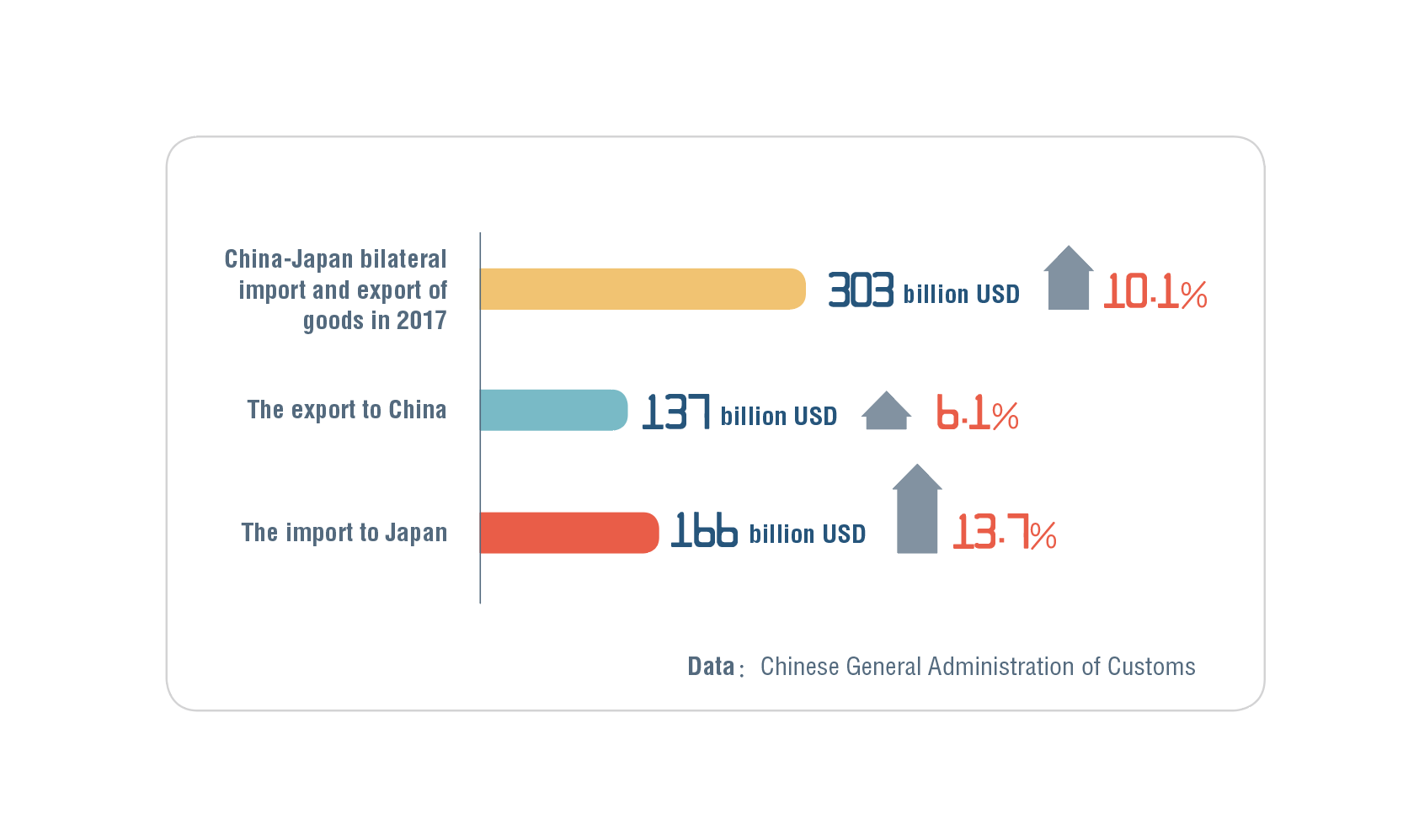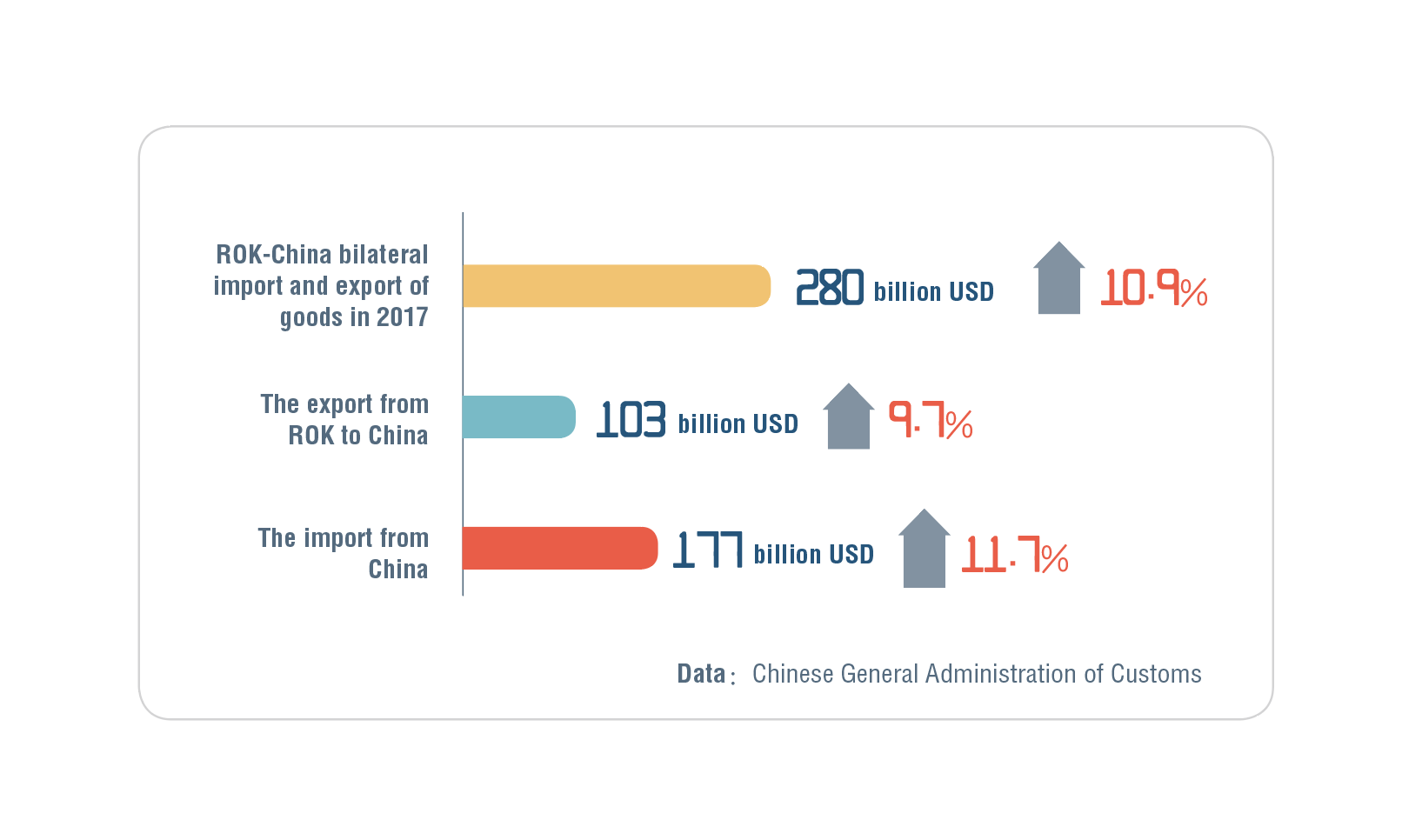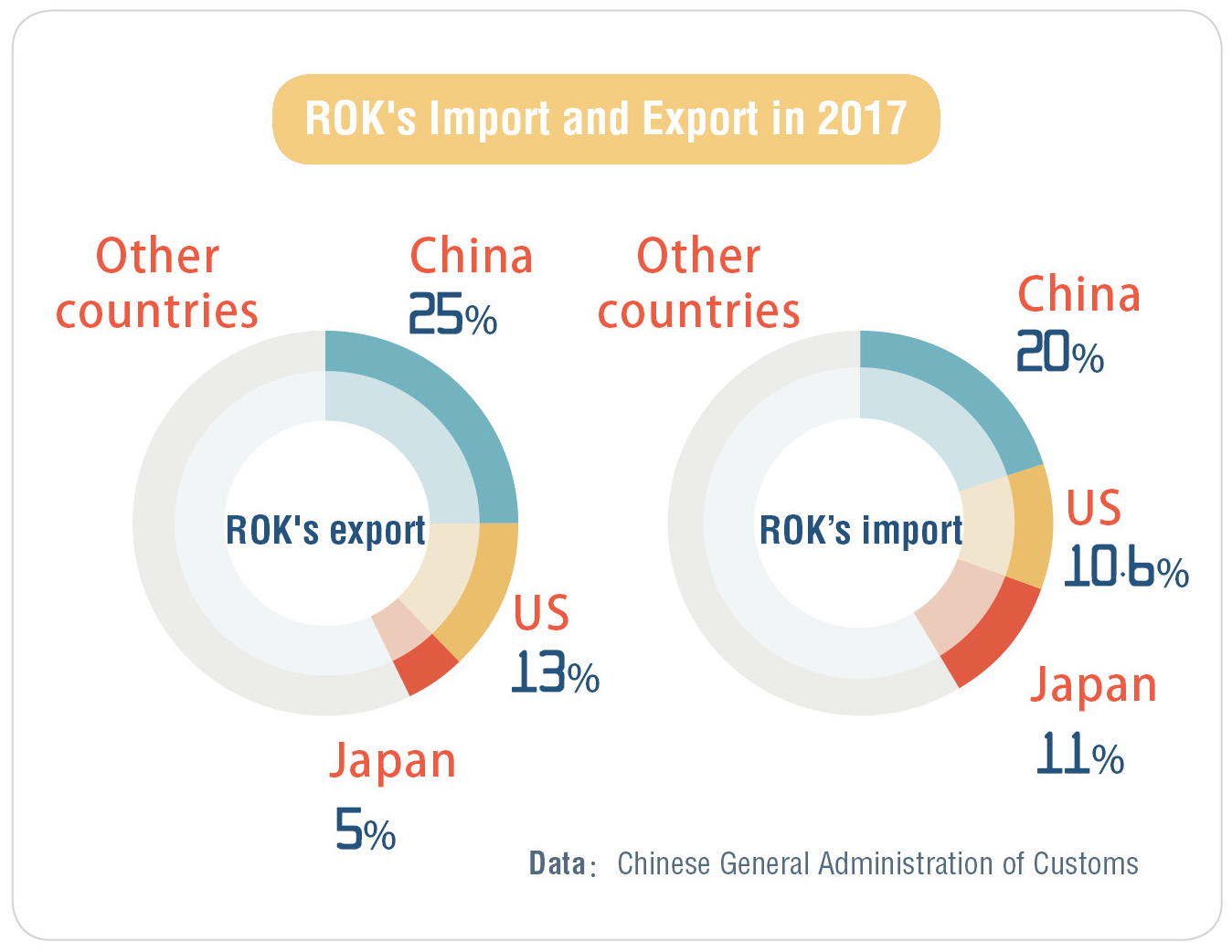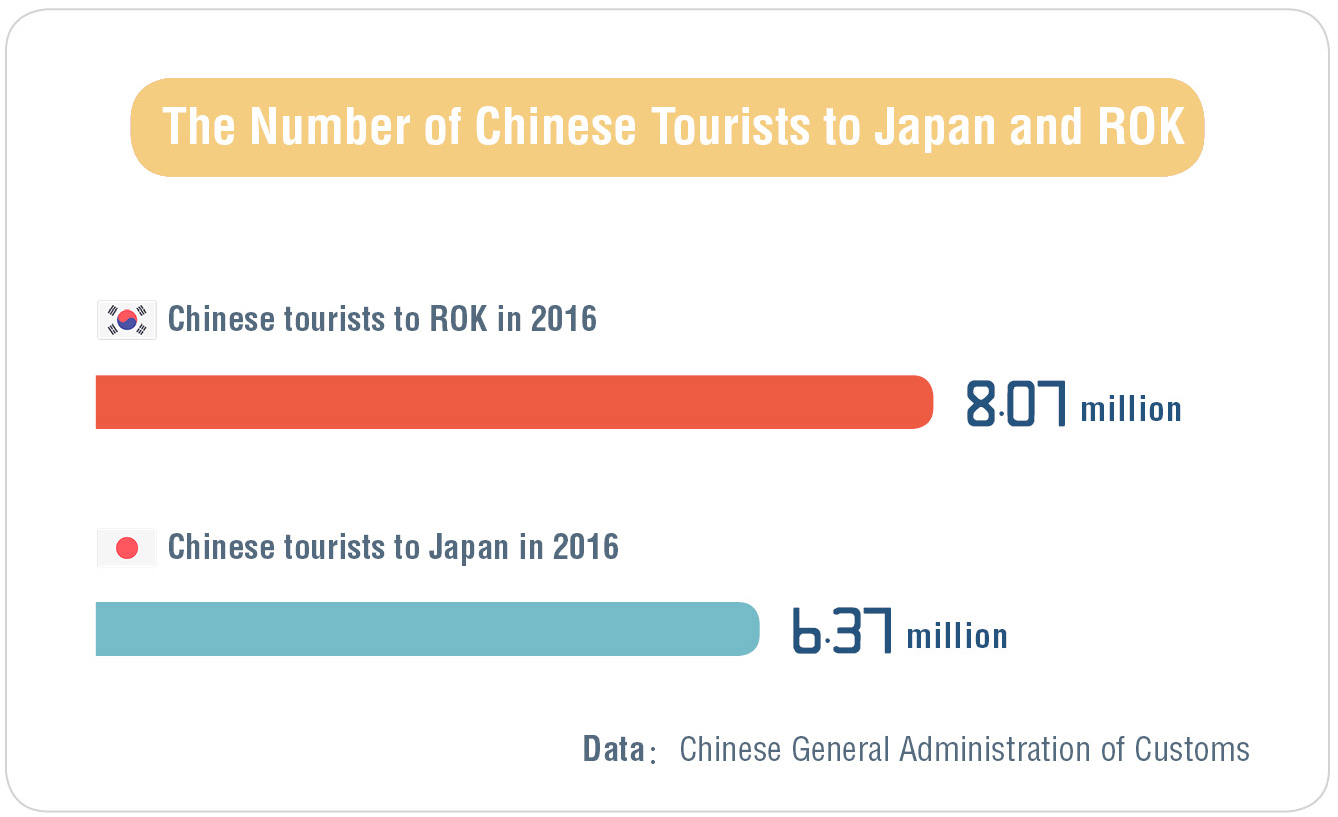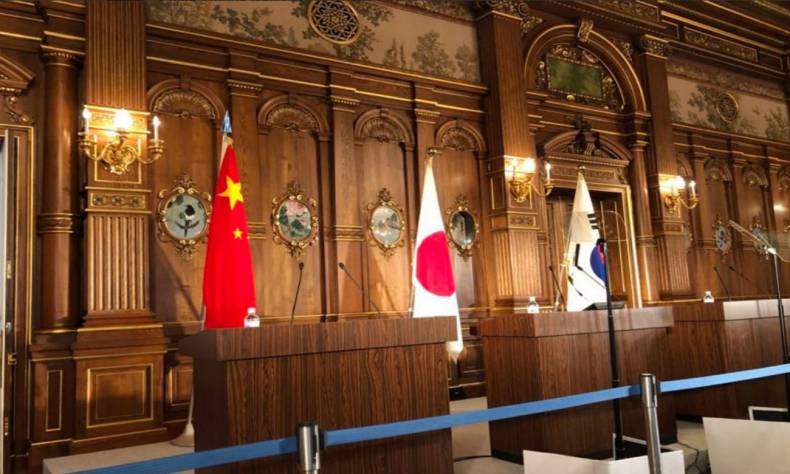
Reunion of Heads of PRC, Japan and ROK – Is “East Asia Era” on the Way ?
The 7th Japan-China-ROK Trilateral Summit will be held in Tokyo, Japan on May 9, 2018. The summit this time in Tokyo indicates that the annual tripartite heads meeting mechanism has been reinstated.
By Zhu Feng
The 7th Japan-China-ROK Trilateral Summit will be held in Tokyo, Japan on May 9, 2018. Three years have passed since the heads of the three countries met at the 6th trilateral summit in Seoul, Korea in November 2015. The summit this time in Tokyo indicates that the annual tripartite heads meeting mechanism has been reinstated. More importantly, at a time when the DPRK nuclear issue, trade disputes, and global regulations and orders are in a period of challenges and uncertainties, the three heads reuniting to exchange views on the regional and world hot issues and open a new chapter of cooperation is of strategic significance to the future stability, prosperity and cooperation of East Asia.
The Outcomes of the Trilateral Summit in the Past Ten Years
The year 2018 is the 10th anniversary of the China-Japan-ROK Trilateral Summit. The mechanism is the fruit of the deeper cooperation between east Asian countries and is also a vital drive to promote and expand East Asia cooperation. In December 2008, China, Japan and ROK summoned a trilateral heads meeting for the first time outside the framework of the ASEAN Plus China, Japan and ROK Summit (10+3) at Fukuoka, Japan, and decided to establish a comprehensive cooperative partnership for the future. At the meeting, the three countries signed and publicized the Joint Statement for Tripartite Partnership which for the first time clarified the positioning of tripartite relationships and confirmed the direction and principles of trilateral cooperation. The meeting also passed the Joint Statement on the International Finance and Economy, the Trilateral Joint Announcement on Disaster Management Cooperation and the Action Plan for Promoting Trilateral Cooperation among the People’s Republic of China, Japan and the Republic of Korea. The most crucial decision made at the Fukuoka summit was to institutionalize the trilateral summit, with the three countries taking turns to host the summit every year while preserving the ASEAN 10+3 heads meeting.
From 2009 to 2012 the trilateral summit achieved remarkable results in fields including promoting practical cooperation among the three countries, launching China-Japan-ROK free trade area negotiations, and legalizing commercial relations. The second trilateral summit was held in Beijing, China in October, 2009 to celebrate the 10th anniversary of cooperation between the three countries. On May 13-14, 2012, the 5th trilateral summit was held in Beijing with Chinese Premier Wen Jiabao, ROK President Lee Myung-bak, and Japanese Prime Minister Yoshihiko Noda attending. At this summit, two significant results were achieved: first, the three countries agreed to launch the negotiation of the China-Japan-ROK free trade area within the year; second, the three countries officially signed the Trilateral Agreement for the Promotion, Facilitation and Protection of Investment. This agreement finally brought 5 years of negotiations between the three governments to fruition. Additionally, this was the first time the three countries had established specified legal responsibilities and obligations relating to investments among them.
Endless Conflicts and Disputes in East Asia
Regardless of the positive results the three countries have achieved, east Asia still suffers from the most intricate and the toughest geo-strategical environment in global politics. Unresolved problems including territorial disputes, problems carried over from history, and security issues are still hampering and posing challenges to progress in cooperation. The Diaoyu Island issue between China and Japan in September 2012 and the ensuing Japan-ROK dispute over Liancourt Rocks led to the meeting being suspended for almost six years; only in November 2015 was a nominal summit held in Seoul. However, compared with the situation three years ago, the upcoming trilateral summit in Tokyo will be held with better preparation and under better conditions.
Recently, the three bilateral relationships – China-Japan, Korea-Japan, and China-Korea – have all seen significant improvement. The DPRK nuclear issue, trade disputes, and the protection and safeguarding of open global rules have put significant pressures upon the leaders of the three countries. With the US constantly disturbing the open global system since Trump took office with its “America First” philosophy, China, Japan and ROK should display resolution and vision to the world, voice their support for protecting free trade rules, and shoulder their common responsibilities.
Rising Trade Among the Three Countries
The outcomes of the 7th China-Japan-ROK Trilateral Summit should be worth waiting for. Despite the near-suspension of the summit in the past six years, trade and people-to-people exchanges among the three nations have made great progress.
According to China’s General Administration of Customs, China-Japan bilateral import and export of goods in 2017 reached almost 303 billion USD, an increase of 10.1%. Exports from Japan to China were 137 billion USD, an increase of 6.1%, while imports from China were 166 billion USD, an increase of 13.7%. China and ROK respectively are the second and the third biggest export markets, and the largest and the 4th largest exporters, to Japan.
Meanwhile, ROK-China bilateral import and export of goods in 2017 reached about 280 billion USD, an increase of 10.9%. ROK exports to China were 103 billion USD, an increase of 9.7%, while imports from China were 177 billion USD, an increase of 11.7%. China, the US and Vietnam were the top three export markets to ROK while Japan took 5th place.
China took around 25% of total ROK exports in 2017. The US maintained a percentage of around 12-13%, while Japan took 5%. China, Japan and the US were the top three exporters to the ROK, taking 20%, 11% and 10.6% of ROK imports. China, Japan and ROK have all become each other’s most important trade partners.
In the past six years, the number of Chinese tourists to Japan and ROK has witnessed a spurt in growth, especially to Japan. Apart from the year 2012, when the number saw a decline due to the Kansai earthquake, the number of tourists has soared since 2013, with an annual growth of 24%.
In 2016, more than 8 million Chinese tourists visited ROK , while tourists to Japan exceeded 6 million.
More importantly, the percentage of the three countries’ aggregate GDP in global GDP is rising too. In 2016, the aggregate GDP of the three countries made up 90% of the whole of east Asia, and 23.2% of the world aggregate. This surpassed the US ratio in global GDP, which was 22%. East Asia is becoming the “core” of global economic stability and prosperity.
The Peaceful Future of the East Asia
The course of trilateral cooperation in the future should mirror this status, and it calls on the three countries to combine and display “the power of the east Asia” together in the global economy and in security governance through cooperation. Trilateral cooperation needs time and joint efforts to ascend new historical peaks in the future.
The “East Asia Era” in world politics is already visible on the horizon. Chinese Prime Minister Li Keqiang pointed out at the 16th East Asia Summit in Manila that east Asia should identify “a path of peaceful coexistence with East Asian features”. Today, east Asia needs peaceful coexistence, and China, Japan and ROK need to strive for common prosperity and enhance mutual trust. They must shoulder “the responsibilities of east Asia” and make historic contributions to a more open, inclusive and cohesive East Asia and even the whole world.
Zhu Feng, executive director of Nanhai research collaborative innovation center of Nanjing university and dean of the institute of international relations of Nanjing university.
 Facebook
Facebook
 Twitter
Twitter
 Linkedin
Linkedin
 Google +
Google +
